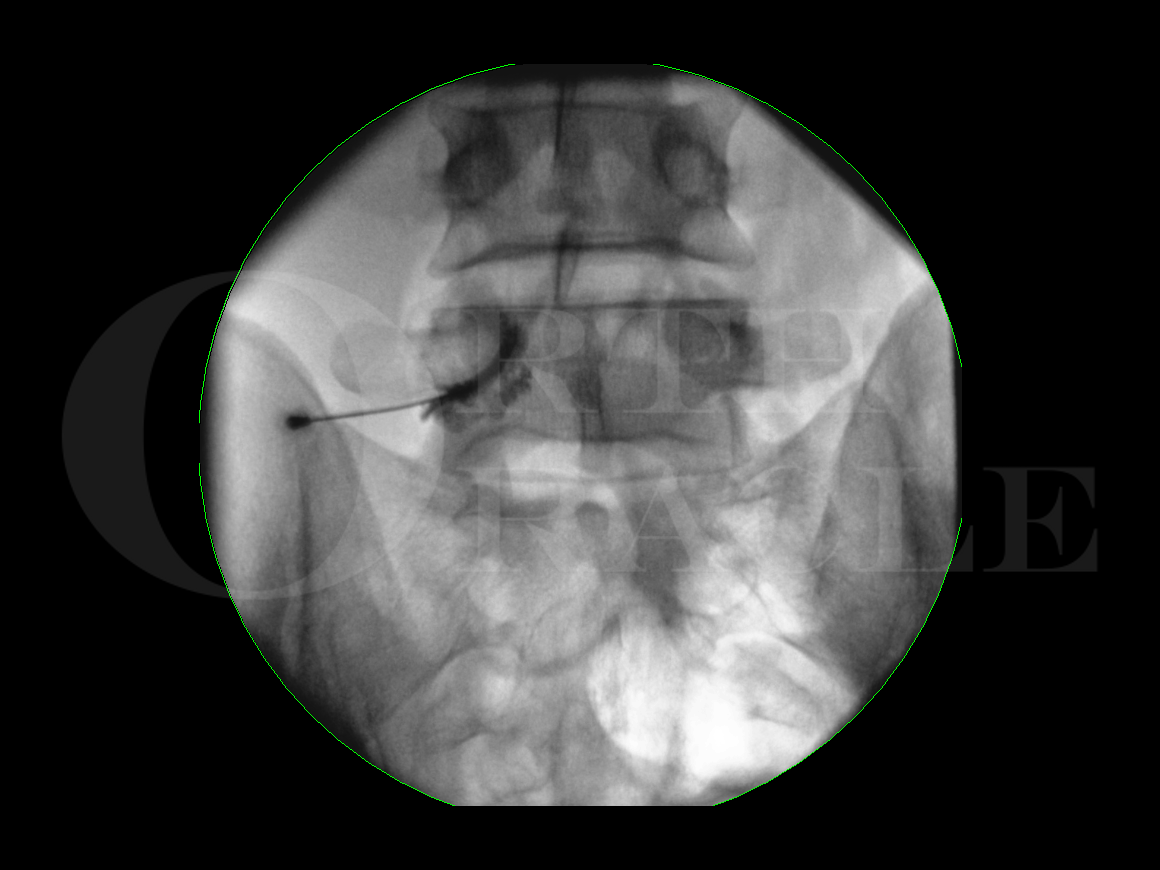Lumbar nerve root block
Overview

Subscribe to get full access to this operation and the extensive Spine Surgery Atlas.
Learn the Lumbar nerve root block surgical technique with step by step instructions on OrthOracle. Our e-learning platform contains high resolution images and a certified CME of the Lumbar nerve root block surgical procedure.
The lumbar nerve root block, or transforaminal epidural, allows injection of steroid and local anaesthetic into the ventral epidural space and around the exiting nerve root. The injectate is placed at the pathological site which should correlate anatomically with the findings from the clinical history and the MRI. The injection can have both diagnostic and therapeutic values.
A transforaminal epidural injection will spread the injectate medially around the pedicle to enter the epidural space as well as covering the exiting nerve root. The nerve root block can be similar to this or can just spread the injectate around the exiting nerve outside of the foramen. The nomenclature is unclear on this.
The traditional approach to this injection is through the subpedicular (supraneural) approach. That is the technique that is described here.
There is an alternative technique of injection lower down in the foramen; where it essentially becomes suprapedicular and infraneural in Kambin’s triangle. The infraneural approach is lower down in the foramen and therefore potentially further away from the nerve. On the MRI slices it is possible to see the vessels low in the foramen. These are of reasonably large caliber and should be avoided. One also has to be mindful of the pathology – a far lateral disc prolapse may occupy this pace and preclude injection in this area.
Injections probably have their best use therapeutically where the pathology stands a reasonable chance of resolution. Disc protrusions tend to get smaller with time as the herniated nucleus pulposis is reabsorbed or dries out. The injection in that setting is trying to improve the pain while the pathology resolves. Degenerative processes such as lumbar spinal stenosis don’t resolve though the symptoms can wane. Injections therapeutically therefore don’t tend to be so useful and are not supported by the guidelines.
Author: Mr Andrew Young, FRCS (Tr & Orth)
Institution: The Royal Orthopaedic Hospital, Birmingham, UK.
Clinicians should seek clarification on whether any implant demonstrated is licensed for use in their own country.
In the USA contact: fda.gov
In the UK contact: gov.uk
In the EU contact: ema.europa.eu



















